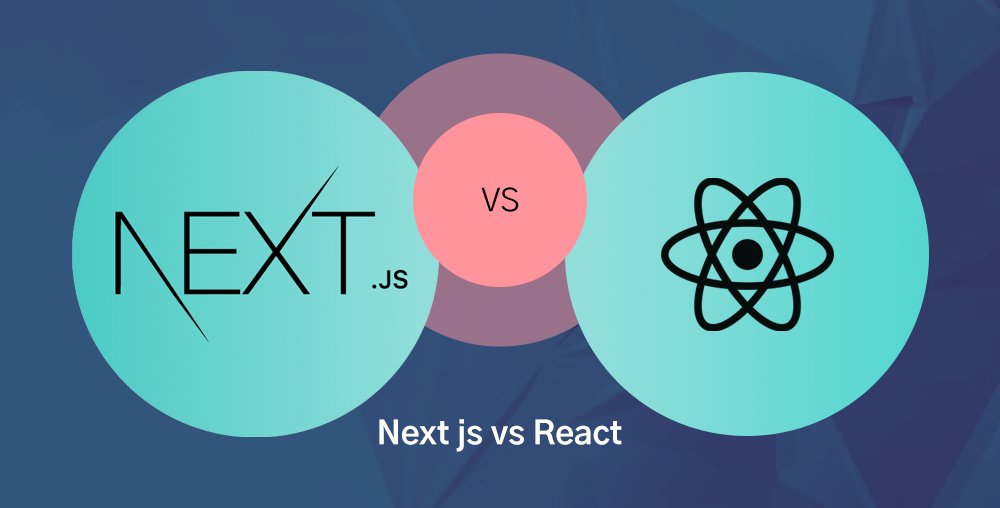
React.js vs Next.js in 2024: Which Framework Should You Choose for Your Web Project?
Choosing the right framework for your web development project can make a significant difference in terms of performance, scalability, and development efficiency. In 2024, React.js and Next.js are two leading technologies that developers frequently consider. This blog post will compare React.js and Next.js, highlighting their features, benefits, and ideal use cases to help you make an informed decision for your next project.
What is React.js?

React.js, commonly referred to as React, is a popular JavaScript library developed by Facebook for building user interfaces. It allows developers to create single-page applications (SPAs) with a component-based architecture. React is renowned for its flexibility, efficiency, and the ability to create interactive UIs with ease.
Key Features of React.js:
- Component-Based Architecture: Breaks down the UI into reusable components, making code more modular and easier to manage.
- Virtual DOM: Enhances performance by minimizing direct manipulations of the real DOM.
- Rich Ecosystem: Supports a vast range of libraries and tools for state management (e.g., Redux), routing (e.g., React Router), and more.
- Declarative Syntax: Makes it easier to understand and predict how the UI will change over time.
What is Next.js?

Next.js is a React framework developed by Vercel that adds a powerful set of features on top of React. It provides built-in support for server-side rendering (SSR), static site generation (SSG), and API routes, aiming to enhance the performance and scalability of React applications.
Key Features of Next.js:
- Server-Side Rendering (SSR): Renders pages on the server at request time, improving SEO and initial load performance.
- Static Site Generation (SSG): Generates static HTML pages at build time, which can be served quickly and efficiently.
- API Routes: Allows you to build backend functionality directly within your Next.js application, simplifying the development process.
- Automatic Code Splitting: Splits code automatically to optimize loading times and performance.
React.js vs Next.js: A Detailed Comparison
1. Rendering and Performance
- React.js: Primarily used for client-side rendering, which means that the initial page load may be slower compared to server-side rendered applications. React can be used with other tools to implement SSR, but it requires additional setup and configuration.
- Next.js: Provides built-in SSR and SSG, which can significantly improve the initial page load time and SEO. By rendering pages on the server or generating static HTML, Next.js offers better performance and quicker load times out of the box.
2. SEO and Accessibility
- React.js: SEO can be challenging with client-side rendering, as search engines might have difficulty indexing dynamic content. However, React can be combined with SSR libraries or frameworks to enhance SEO.
- Next.js: SEO is more straightforward with Next.js due to its support for SSR and SSG. Server-rendered pages are easily indexable by search engines, making it a better choice for SEO-intensive applications.
3. Development Experience
- React.js: Offers flexibility and a rich ecosystem of libraries and tools, allowing developers to choose their own solutions for routing, state management, and more. This flexibility can be advantageous but may require additional setup and decision-making.
- Next.js: Provides a more opinionated development experience with built-in features for routing, SSR, and API routes. This opinionated approach can streamline development and reduce the need for additional configurations.
4. Use Cases
- React.js: Ideal for building single-page applications, complex UIs, and applications that require a high level of interactivity. React’s flexibility makes it suitable for projects where custom configurations and integrations are needed.
- Next.js: Best suited for applications that benefit from improved SEO, performance, and scalability. Use cases include e-commerce sites, blogs, marketing websites, and any application where server-side rendering or static site generation provides significant advantages.
When to Choose React.js
Choose React.js if you need:
- A high degree of flexibility and control over the development process.
- A solution for building complex and interactive UIs.
- To integrate with existing tools and libraries without strict constraints.
When to Choose Next.js
Choose Next.js if you need:
- Improved performance with server-side rendering and static site generation.
- Built-in features like API routes and automatic code splitting.
- Better SEO capabilities and faster initial page load times.
Conclusion
Both React.js and Next.js offer powerful capabilities for web development, but they serve different needs and scenarios. React.js provides flexibility and a component-based approach ideal for interactive UIs, while Next.js enhances React with built-in SSR, SSG, and performance optimizations. Consider your project requirements, including SEO needs, performance goals, and development preferences, to choose the best framework for your web application in 2024.
For more insights on React and Next.js, check out our React vs. Next.js in-depth guide and Best Practices for Optimizing React Applications.





